Trauma Blu-ray Movie
HomeTrauma Blu-ray Movie 
Slipcover Edition Limited to 10,000 | Dario Argento's TraumaVinegar Syndrome | 1993 | 1 Movie, 2 Cuts | 110 min | Not rated | Nov 26, 2021
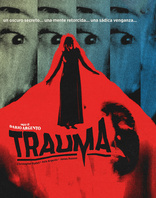
Price
Movie rating
6.1 | / 10 |
Blu-ray rating
| Users | 0.0 | |
| Reviewer | 4.5 | |
| Overall | 4.5 |
Overview
Trauma (1993)
From the acclaimed Italian horror master Dario Argento comes an eerie, unforgettable tale of terror. Aura (Dario's daughter, Asia), a suicidal anorexic preparing to jump off a bridge, is rescued by David (Christopher Rydell) an artist whom takes an interest in the beautiful girl, and makes it his personal mission to help her. When Aura's mother (Piper Laurie), a psychic, dies just as she is about to divulge the identity of a vicious psychopath, David decides to help Aura find the killer. The pair work to protect one another while embarking on a dangerous search for a murderer who's been slaughtering innocent people with a homemade decapitation device...
Starring: James Russo, Frederic Forrest, Asia Argento, Piper Laurie, Brad DourifDirector: Dario Argento
| Horror | 100% |
Specifications
Video
Video codec: MPEG-4 AVC
Video resolution: 1080p
Aspect ratio: 2.35:1
Original aspect ratio: 2.39:1
Audio
English: DTS-HD Master Audio 2.0 (48kHz, 24-bit)
English: Dolby Digital 2.0 (320 kbps)
Subtitles
English SDH
Discs
Blu-ray Disc
Single disc (1 BD)
Packaging
Slipcover in original pressing
Playback
Region A, B (C untested)
Review
Rating summary
| Movie | 2.5 | |
| Video | 4.5 | |
| Audio | 4.0 | |
| Extras | 5.0 | |
| Overall | 4.5 |
Trauma Blu-ray Movie Review
Reviewed by Brian Orndorf November 26, 2021Dario Argento delivered fantastic horror and mystery movies in the 1970s and ‘80s, but the 1990s were tough on the director. 1993’s “Trauma” is arguably where his creative decline began, trying to get something disturbing going with a chiller concerning a black gloved killer using a garroting machine to help collect heads for a mysterious reason, co-writing a screenplay that’s searching for ways to be an odd whodunit. There’s a large number of ideas and different tones swirling around “Trauma,” but Argento’s instincts aren’t sharp this time around, coming off unsure with what he wants to do with the endeavor, which has the capacity to be unspeakably brutal or uncomfortably romantic, but remains mostly muddled.
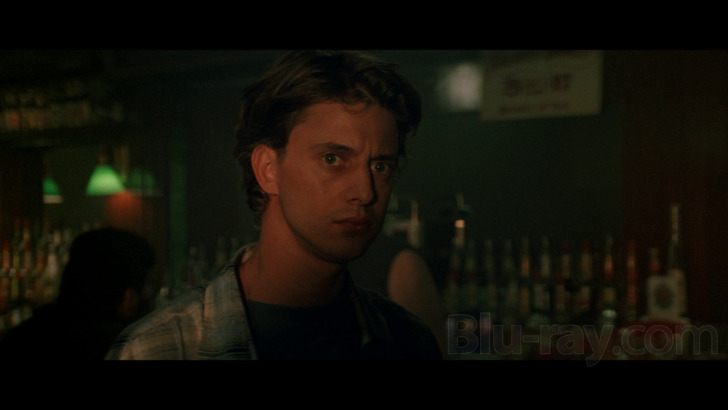
Aura (Asia Argento) is a 16-year-old girl who’s just escaped from a treatment facility run by Dr. Judd (Frederic Forrest), ready to end her life on a bridge. Stopping the suicide attempt is David (Christopher Rydell), a television news graphics designer who takes a special interest in Aura, trying to understand her panic and her eating disorders. The pair grow close as the teenager’s tale becomes clear, but horror keeps the city on edge, with a mysterious killer visiting specific targets with a special garroting machine capable of slicing off heads in a manner of seconds, murdering Aura’s parents along the way.
Instead of working in his native Italy or another European location, Argento brings his bloody business to America, with “Trauma” shot around the Minneapolis/St. Paul area. The change in view gives the production a different visual quality than other Argento productions, offering more of an urban presence as characters move around the city, providing a Midwestern playground for the ugliness of the premise. However, the addition of fresh surroundings doesn’t dilute Argento’s habitual strangeness, which involves a serial killer collecting heads, using a loud device that slices through skin in no time, wielded by an unseen character who’s after specific people, putting Aura on edge when the monster comes after her family. The beheading moments are the only inspired sequences in “Trauma,” adding intensity to an otherwise pedestrian feature, playing up Argento’s imagination for bodily harm.
Suspense is limited to murder sequences, as the saga of Aura is fairly dull. She’s not an interesting character, with the writing trying to make her complex by assigning her an eating disorder that’s not explored in full. She’s also a teenager, only 16 years old, and the screenplay pairs her up with David, who’s roughly 14 years older, with their union meant to become something romantic, but mostly registers uncomfortably. The iffy Euro sensibilities of “Trauma” don’t translate to the Minnesota-set story, and it doesn’t help that both Asia Argento and Rydell underwhelm with their performances, also lacking chemistry.
“Trauma” also has trouble as a detective story, working through the murky motivations of the killer. Aura and David are on the case, along with supporting characters, such as Capt. Travis (James Russo) and Dr. Judd, and the feature works the best when stripping away everything but sleuthing, finding tension with clue-gathering, including the addition of a little kid living near the murderer, trying to make sense of horrors he spies through his bedroom window. Argento isn’t interested in simplicity, gumming up the endeavor with superfluous ideas, including a scene where Dr. Judd forces Aura to consume psychotropic berries, creating a moment for the helmer to showcase his love of the abstract, pulling viewers out of the story in the process.
Trauma Blu-ray Movie, Video Quality 
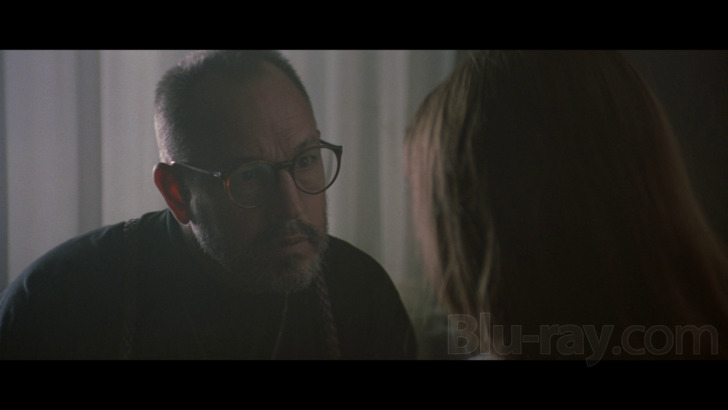
Trying to offer the most complete version of "Trauma" to date, Vinegar Syndrome delivers an AVC encoded image (2.35:1 aspect ratio) presentation sourced from a 35mm interpositive. Additional scenes are sourced from an older HD master, offering short moments were the image quality takes a slight dip, but nothing severe. Detail remains strong throughout the smoky feature, preserving skin surfaces and gory makeup additions. Exteriors retain dimension, with the story zipping all over the Minneapolis/St. Paul area, and interiors preserve decorative additions. Colors are precise, exploring moodier, cooler lighting and bright greenery. Skintones are natural. Delineation is strong, preserving shadowy encounters. Grain is fine and film-like. Source is in good condition.
Trauma Blu-ray Movie, Audio Quality 
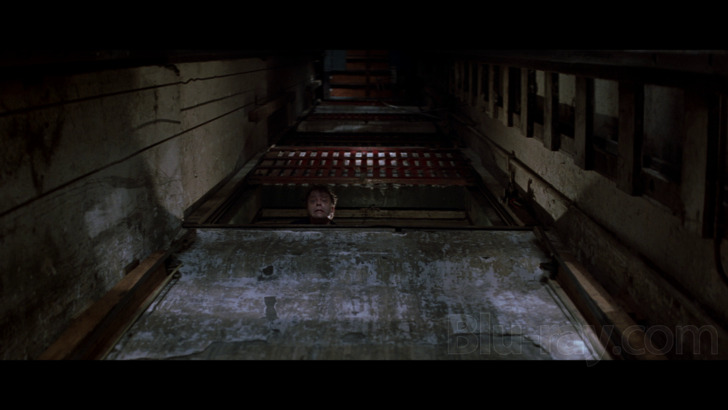
The 2.0 DTS-HD MA mix isn't too forceful with scoring cues, but instrumentation remains appreciable, and soundtrack additions are crisply detailed. Dialogue exchanges are clear, helping with emotionality and Asia Argento's somewhat heavy accent. Added scenes from the older HD master offer a noticeable decline in audio quality, but these moments are brief. Sound effects are sharp, with the sickening whir of the garroting machine pronounced, along with other acts of bodily harm. Atmospherics also explore community bustle.
Trauma Blu-ray Movie, Special Features and Extras 
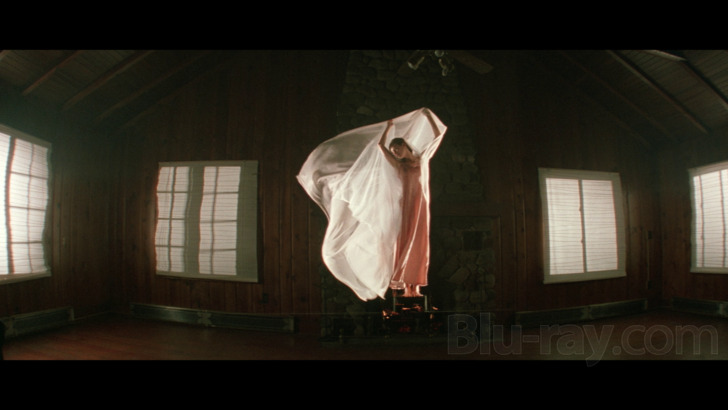
- Commentary #1 features The Hysteria Continues.
- Commentary #2 features film historian Alexandra Heller-Nicholas.
- Video Workprint (112:48, SD) presents an early cut of "Trauma," sourced from a VHS tape.
- "When the Lightning Strikes" (34:23, HD) is an interview with cinematographer Raffaele Mertes, who originally met Dario Argento on the set of "The Sect." Instead of working in Italy, "Trauma" was filmed in Minneapolis, and Mertes has kind things to say about the local crew, but less generous thoughts concerning the city's weather and historical value, though he remains impressed with the local skyway system, which connects buildings in the downtown area. Mertes recalls his surprise with actress Piper Laurie's weight gain before the shoot, and he details the on-set mood involving a moment of nudity from Asia Argento. The helmer's enthusiasm is explored, dealing with hard hits of violence and the care of geckos. Camera movement is analyzed, and the picture's wacky end credit musical number is slightly roasted.
- "Beheaded" (23:41, HD) is an interview with director Dario Argento, who opens with his inspirations for "Trauma," sharing thoughts on anorexia and an anecdote about his visit to Nathaniel Hawthorne's home. Deciding to make the movie in Minneapolis, Argento aimed to create a different feel for the endeavor, often using chemical-based smoke that destroyed his sense of taste and smell for years. Argento explores the decision to include a nude scene featuring his daughter, and lays into Piper Laurie a bit, calling her a "weird person." Editing frustrations are identified, as "Trauma" was pieced together using the laserdisc-based EditDroid system, with George Lucas talking the helmer into making the change.
- "Heads Above the Rest" (18:02, HD) is an interview with special makeup effects icon Tom Savini, who recalls his initial meeting and subsequent relationship with Dario Argento. Regarding the helmer as a visual stylist, Savini details Argento's creative inspirations. The manufacturing of severed heads is explored, and Savini shares information about special heads that weren't used during the shoot. He also brings a duffle bag of old heads, showing them off with pride. Savini closes with thoughts on the construction of the killing machine used in the picture, and his estimation of "Trauma," ranking it as one of his "33 good movies."
- "Female Hamlet" (17:11, HD) is an interview with co-screenwriter Franco Ferrini, and he explores the themes of "Trauma," including the use of anorexia, which was pulled directly from Dario Argento's family life. Ferrini walks through the shaping of the screenplay, emphasizing the love story in the middle of all the violence. Characters are assessed, and the murder weapon is admired. The interviewee is a bit more opinionated about Argento's time in America, upset with the "ugly" architecture in Minneapolis.
- "Ruby Rain" (14:54, HD) is an interview with composer Pino Donaggio, who recalls his initial meeting with Dario Argento, answering a request to use music from "Body Double" for a fashion show. Donaggio eventually collaborated with Argento on "Two Evil Eyes," and he goes into themes, instrumentation, and inspiration behind his work for "Trauma.
- Interview (8:46, HD) is a video conference chat with first assistant director Rod Smith, who postponed his return home to California after a shoot in Arizona to work with Dario Argento in Minneapolis. Smith shares his professional duties and recalls Argento's crazy energy on-set, also sharing his thoughts on working in Minneapolis during the late summer.
- Interview (5:07, HD) is a brief discussion of "Trauma" with actress Piper Laurie, who admits she didn't understand the screenplay, drawn to the wildness of the part. Laurie keeps repeating how much fun the film was to make, inspiring fits of laughter shared with co- star Frederic Forrest.
- Interview (5:53, HD) sits down with actress Sharon Barr, who responded to Dario Argento's special directorial "energy," which was required while working inside an old children's tuberculosis ward. A few co-stars are fondly recalled.
- Interview (6:30, HD) is a conversation with casting director Ira Belgrade, who ended up taking an acting role in "Trauma," working with lines created by his wife, Ruth Jessup, who punched up the screenplay. Casting highlights are also shared.
- Interview (3:49, HD) spends a few minutes with actor James Russo, who declared his love for Dario Argento after watching "Suspiria," determined with work with the director on "Trauma."
- "On Set with Tom Savini" (8:02, SD) highlights to work of the special makeup effects master.
- Electronic Press Kit (8:25, SD) is a promotional package for "Trauma."
- And English Trailer #1 (2:04, SD), English Trailer #2 (1:41, SD), and Italian Trailer (1:42, SD) are included.
Trauma Blu-ray Movie, Overall Score and Recommendation 

"Trauma" should be shorter, getting straight to the point with murder happenings and suspicions, and the score by Pino Donaggio and Andrea Bandel seems to be supporting a different movie, mangling moods with odd tonal choices. The grisliness of "Trauma" is occasionally thrilling, but Argento isn't particularly invested in the outrageous nastiness of the picture, trying his best to class up the endeavor with supernatural touches, awkward romantic ideas, and flatlining dramatics.
Similar titles
Similar titles you might also like

Deep Red 4K
Profondo rosso
1975

Phenomena 4K
Standard Edition
1985

Don't Answer the Phone!
1980

Blood Harvest
1987

Popcorn
Special Edition | Phantom of the Cinema
1991

Candyman: Farewell to the Flesh
1995

Jack's Back
1988

Harvest of Fear
2004

Silent Night, Deadly Night 3: Better Watch Out!
1989

Cat in the Brain
Un gatto nel cervello | Glow in the Dark Cover & Mini Portrait of Lucio Fulci Limited Edition to 3000
1990

Body Puzzle
Misteria
1992

Friday the 13th: Part VII - The New Blood
Friday The 13th Collection Deluxe Edition Version
1988

Halloween 5: The Revenge of Michael Myers 4K
Collector's Edition
1989

Halloween 4K
Collector's Edition
1978

Censor
2021

Hollywood Horror House
Savage Intruder
1970

Dementia 13
Director's Cut
1963

Blood Hook
1986

Blood and Black Lace
Sei donne per l'assassino
1964

Nightflyers: Season One
2018
